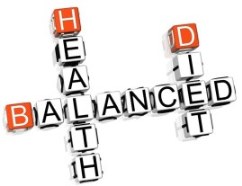- Proteins: These are required for growth and repair. Many people associate protein with meats, it is found in a variety of foods. There are both animal and plant sources of protein. Animal sources include all types of meats, fish, eggs and dairy products. Plant sources include peanut butter, almonds, tofu, and lentils. When it comes to protein, there is a significant difference between animal and plant proteins. Animal proteins are considered "complete" because they contain all the essential amino acid building blocks in a single protein food
- Fats: Also used as a source of energy: they are also stored beneath the skin helping to insulate us against the cold. You must have some fat in your diet because it contains fat soluble vitamins. If you eat too much carbohydrate and protein, you will convert some of it into fat, so you will put on weight. You must balance the amount of energy containing foods with the amount of energy that you use when you take exercise.
- Vitamins: these are required in very small quantities to keep you healthy.
- Vitamin A: good for your eyes.
- Vitamin B: about 12 different chemicals.
- Vitamin C: needed for your body to repair itself.
- Vitamin D: can be made in your skin, needed for absorption of Calcium.
- Vitamin E: the nice one - reproduction?
- Mineral Salts: these are required for healthy teeth, bones, muscles etc.
- Iron: required to make hemoglobin.
- Calcium: required for healthy teeth, bones and muscles.
- Sodium: all cells need this, especially nerve cells.
- Iodine: used to make a hormone called thyroxin.
- Fibre: This is required to help your intestines function correctly; it is not digested. If you do not eat foods materials which contain fibre you might end up with problems of the colon and rectum. The muscles of you digestive system mix food with the digestive juices and push food along the intestines by peristalsis; if there is no fibre in your diet these movements cannot work properly.
How many servings of each group?
The USDA provides a interactive tool that shows how you can improve your diet and health with Daily Food Plan.


